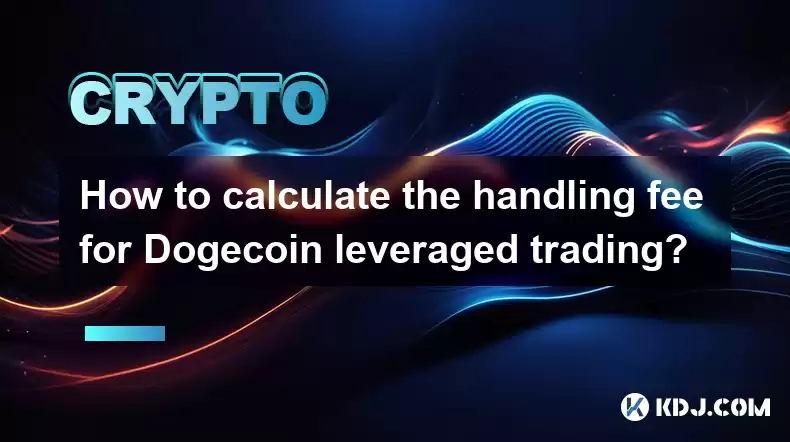-
 Bitcoin
Bitcoin $114200
0.00% -
 Ethereum
Ethereum $3637
0.56% -
 XRP
XRP $2.950
-2.01% -
 Tether USDt
Tether USDt $0.9999
0.02% -
 BNB
BNB $761.0
0.55% -
 Solana
Solana $164.1
-1.38% -
 USDC
USDC $0.9999
0.02% -
 TRON
TRON $0.3332
0.36% -
 Dogecoin
Dogecoin $0.2012
-0.52% -
 Cardano
Cardano $0.7261
-1.41% -
 Hyperliquid
Hyperliquid $37.62
-2.13% -
 Stellar
Stellar $0.3930
-2.65% -
 Sui
Sui $3.441
-0.16% -
 Bitcoin Cash
Bitcoin Cash $563.8
0.70% -
 Chainlink
Chainlink $16.50
0.09% -
 Hedera
Hedera $0.2424
-0.14% -
 Ethena USDe
Ethena USDe $1.001
0.01% -
 Avalanche
Avalanche $22.20
0.00% -
 Litecoin
Litecoin $118.0
-2.48% -
 UNUS SED LEO
UNUS SED LEO $8.991
0.12% -
 Toncoin
Toncoin $3.195
-3.87% -
 Shiba Inu
Shiba Inu $0.00001217
0.12% -
 Uniswap
Uniswap $9.674
-0.21% -
 Polkadot
Polkadot $3.633
1.00% -
 Monero
Monero $295.3
-0.82% -
 Dai
Dai $0.9999
0.00% -
 Bitget Token
Bitget Token $4.321
-0.41% -
 Cronos
Cronos $0.1392
0.73% -
 Pepe
Pepe $0.00001027
-0.89% -
 Aave
Aave $258.5
0.32%
How to calculate the handling fee for Dogecoin leveraged trading?
Dogecoin leveraged trading fees comprise trading fees (percentage of trade value), funding fees (based on market demand and position), and interest charges (on borrowed funds). Accurate calculation requires checking your exchange's specific fee structure.
Mar 16, 2025 at 03:25 am

Key Points:
- Dogecoin leveraged trading involves borrowing funds to amplify potential profits (and losses).
- Handling fees in leveraged trading consist of several components: trading fees, funding fees, and potential interest charges.
- Trading fees are typically a percentage of the trade value, varying across exchanges.
- Funding fees are paid or received depending on the leverage position and market demand.
- Interest charges apply if you borrow funds from the exchange, calculated based on the loan amount and interest rate.
- The exact calculation requires knowing the specific fees of the exchange you are using.
How to Calculate the Handling Fee for Dogecoin Leveraged Trading?
Leveraged trading in Dogecoin, like other cryptocurrencies, involves borrowing funds from an exchange to increase your position size. This magnifies potential profits, but equally amplifies potential losses. Understanding the associated handling fees is crucial for successful trading. The fees aren't a single, simple number; they are a combination of several charges.
1. Trading Fees: Most exchanges charge a fee for each trade you execute. This is usually a percentage of the total trade value. For example, an exchange might charge 0.1% per trade. If you buy $1000 worth of leveraged Dogecoin, the trading fee would be $1. The exact percentage varies significantly between exchanges, so always check the fee schedule of your chosen platform before trading.
2. Funding Fees: This is a unique aspect of leveraged trading. Funding fees represent the cost of borrowing or the payment received for lending. In leveraged positions, you are essentially borrowing funds from the exchange or other traders. If there's high demand for Dogecoin (long positions dominate), those holding short positions pay a funding fee to those holding long positions. Conversely, if short positions are dominant, long positions pay funding fees to short positions. The amount varies based on market conditions and the length of your position.
3. Interest Charges (Margin Interest): Some exchanges charge interest on the borrowed funds used in leveraged trading. This interest accrues over time and is calculated based on the amount borrowed and the applicable interest rate. The interest rate is often dependent on the leverage ratio and the length of time the position is held. High leverage usually means a higher interest rate. Check your exchange's margin interest rate before opening a leveraged position.
Calculating the Total Handling Fee:
Determining the total handling fee requires adding together all the components.
- Step 1: Calculate the trading fee: Trade value x Trading fee percentage.
- Step 2: Determine the funding fee: This is exchange-specific and dependent on market conditions; it's usually displayed on the platform during the trade process.
- Step 3: Calculate the interest charge (if applicable): Borrowed amount x Daily interest rate x Number of days.
- Step 4: Sum the components: Trading fee + Funding fee + Interest charge = Total handling fee.
Example:
Let's assume you're trading Dogecoin on an exchange with a 0.1% trading fee, a 0.05% daily funding fee (paid by you), and a 5% annual interest rate on borrowed funds. You borrow $1000 to buy Dogecoin with 2x leverage. You hold the position for 3 days.
- Trading Fee: $1000 x 0.001 = $1
- Funding Fee: $1000 x 0.0005 x 3 = $1.50
- Interest Charge: ($1000 x 0.05) / 365 x 3 = $0.41 (approximately)
- Total Handling Fee: $1 + $1.50 + $0.41 = $2.91
Exchange Specifics:
It's crucial to understand that the exact calculation differs significantly between exchanges. Each platform has its own fee structure. Always consult the specific fee schedule of the exchange you plan to use for accurate calculations.
Common Questions:
Q: Are there any hidden fees in Dogecoin leveraged trading? A: While most exchanges are transparent about their fees, it's always prudent to carefully review their fee schedule to avoid any surprises. Hidden fees are rare, but checking is always best practice.
Q: How does leverage affect handling fees? A: Higher leverage usually increases both the trading fee (due to the larger trade value) and the funding fees and interest charges (due to the larger amount borrowed).
Q: Can funding fees be negative? A: Yes, if market conditions favor your position, you might receive funding payments instead of paying them. This is because you are essentially lending your funds to other traders.
Q: How often are funding fees calculated? A: Funding fees are usually calculated and settled periodically, often every 8 hours, but this can vary by exchange.
Q: What happens if I don't have enough funds to cover the handling fees? A: The exchange will likely liquidate your position to cover the outstanding fees and any losses incurred. This is a significant risk of leveraged trading.
Disclaimer:info@kdj.com
The information provided is not trading advice. kdj.com does not assume any responsibility for any investments made based on the information provided in this article. Cryptocurrencies are highly volatile and it is highly recommended that you invest with caution after thorough research!
If you believe that the content used on this website infringes your copyright, please contact us immediately (info@kdj.com) and we will delete it promptly.
- Brazil, Bitcoin, Hearing Date: Is Brazil About to Embrace Bitcoin?
- 2025-08-06 20:30:38
- Stabull DEX on Base Chain: A New Era for Stablecoins?
- 2025-08-06 20:47:53
- WeWake Finance: Is This the Crypto ROI Opportunity You've Been Waiting For?
- 2025-08-06 21:10:18
- PancakeSwap, US Stocks, and Perpetual Contracts: A New Frontier in DeFi
- 2025-08-06 21:10:18
- South Korea, Stablecoins, and Online Banks: KakaoBank's Bold Move
- 2025-08-06 20:47:53
- Crypto, ASEAN, and the Philippines: Web3's Rising Star?
- 2025-08-06 21:55:07
Related knowledge

Bitcoincoin burning mechanism
Jul 20,2025 at 09:21pm
What is the Dogecoin burning mechanism?The Dogecoin burning mechanism refers to the process of permanently removing DOGE tokens from circulation by se...

How to earn free Bitcoincoin?
Jul 19,2025 at 10:08pm
What is Dogecoin and Why Earn It?Dogecoin (DOGE) started as a meme-based cryptocurrency in 2013 but has grown into a widely recognized digital asset. ...

Is Coinbase a good wallet for Bitcoincoin?
Jul 19,2025 at 04:42pm
Understanding Coinbase as a Wallet Option for DogecoinWhen considering where to store Dogecoin, Coinbase is often mentioned as a potential option due ...

How to buy Bitcoincoin with PayPal?
Jul 23,2025 at 06:57am
Understanding the Basics of Buying DogecoinBefore diving into the process of buying Dogecoin with PayPal, it’s essential to understand what Dogecoin i...

Best app to buy Dogecoin
Jul 23,2025 at 03:08pm
What Is a Cryptocurrency Exchange and How Does It Work?A cryptocurrency exchange is a digital marketplace where users can buy, sell, or trade cryptocu...

How are Dogecoin gains taxed?
Jul 25,2025 at 07:01am
Understanding the Taxation of Dogecoin GainsWhen it comes to Dogecoin (DOGE), many investors are drawn to its meme-inspired branding and volatile pric...

Bitcoincoin burning mechanism
Jul 20,2025 at 09:21pm
What is the Dogecoin burning mechanism?The Dogecoin burning mechanism refers to the process of permanently removing DOGE tokens from circulation by se...

How to earn free Bitcoincoin?
Jul 19,2025 at 10:08pm
What is Dogecoin and Why Earn It?Dogecoin (DOGE) started as a meme-based cryptocurrency in 2013 but has grown into a widely recognized digital asset. ...

Is Coinbase a good wallet for Bitcoincoin?
Jul 19,2025 at 04:42pm
Understanding Coinbase as a Wallet Option for DogecoinWhen considering where to store Dogecoin, Coinbase is often mentioned as a potential option due ...

How to buy Bitcoincoin with PayPal?
Jul 23,2025 at 06:57am
Understanding the Basics of Buying DogecoinBefore diving into the process of buying Dogecoin with PayPal, it’s essential to understand what Dogecoin i...

Best app to buy Dogecoin
Jul 23,2025 at 03:08pm
What Is a Cryptocurrency Exchange and How Does It Work?A cryptocurrency exchange is a digital marketplace where users can buy, sell, or trade cryptocu...

How are Dogecoin gains taxed?
Jul 25,2025 at 07:01am
Understanding the Taxation of Dogecoin GainsWhen it comes to Dogecoin (DOGE), many investors are drawn to its meme-inspired branding and volatile pric...
See all articles

























































































